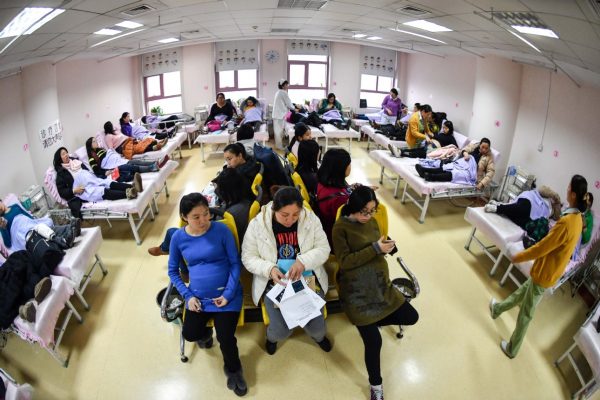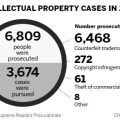
Pregnant women wary of screening after rash of ‘false-negative’ results. Yang Wanli reports.
Noninvasive prenatal testing, which can detect Down syndrome and other chromosomal conditions by checking a sample of the mother’s blood, has been used in Western countries for many years without controversy.
In China, NIPT, as it is known, was piloted in 2015, and official permission for its clinical use nationwide was granted the following year. Now, though, the test is facing a crisis of trust.
In July, an 8-month-old boy from Hunan province was diagnosed with mental disabilities and physical deformities, despite having been assessed as low risk after his mother had an NIPT test during pregnancy.
Although it was later proved that the test could not have detected the boy’s problems, the case triggered public concern about the accuracy of NIPT after dozens of women were reported to have given birth to babies with Down syndrome after receiving “false-negative” results.
Contributory factors
According to the most recent information available – a report by the National Health and Family Planning Commission – the rate of birth defects nationwide was 5.6 percent in 2012, meaning about 900,000 babies were born with defects.
Moreover, one in 10 families in China included a child with a disability, according to the report.
“In addition to factors such as environmental pollution, exposure to radiation, or unhealthy lifestyles, genetic problems are among the most common causes of a large number of birth defects such as Down syndrome, which retards physical and mental development,” said Duan Tao, director of the Shanghai Prenatal Diagnostic Center.
Duan said genetic disorders can be screened and diagnosed prenatally via ultrasound examination, conventional blood tests that measure the levels of two specific hormones and two proteins in the mother’s blood with an accuracy rate of about 60 to 70 percent, and NIPT, which has an accuracy rate of 99.3 to 99.5 percent.
NIPT detects chromosomal disorders by analyzing a minute amount of placental DNA in the mother’s blood, according to Zhou Daixing, CEO of Berry Genomics, one of China’s largest next-generation sequencing technology companies.
In the past seven years, the company has provided NIPT services to about 2.8 million women. It claims detection sensitivity of 99.5 percent, based on clinical follow-ups of more than 1 million samples.
Zhou said NIPT covers three major chromosomal disorders: Down syndrome; Trisomy 13 and Trisomy 18 (which cause severe birth defects and hamper development); and irregularities in the number of sex chromosomes, which can lead to conditions such as Turner or Klinefelter syndromes, which result from missing or duplicated sex chromosomes.
“The amount of fetal DNA in the blood sample influences the accuracy of the test. Also, since the DNA being tested comes from the placenta and not directly from the fetus, there is a very, very small possibility that the DNA we detect is not that of the fetus, which would lead to an inaccurate result,” he said.
According to Zhou, the mother’s general health can also influence the accuracy of the test; for example, if she is overweight, has cancer, autoimmune disease or has had an organ transplant. In addition, the test is not recommended for women carrying more than one fetus.
Greater provision. Check on medical detox.
To reduce the rate of birth defects, the National Development and Reform Commission’s 13th Five-Year Plan (2016-2020) emphasizes the importance of improving medical services before and during pregnancy. The commission has set goals of raising the amount spent on testing to 800 million or 1 billion yuan ($116.5 million to $145.7 million) a year by 2020 and providing gene tests for half of the total newborn population.
“Lots of parents have very high expectations of NIPT. Most people focus on its safety and high accuracy rate, but they know little about the technology itself and are unaware of the potential for inaccurate results,” Duan said.
Reports suggest that many women were given the all-clear by NIPT but later gave birth to children with physical or mental disabilities because the test was performed by a physician who either did not inform the parents of a possible false result or failed to conduct further tests, even after seeing ultrasound reports that indicated potential problems.
“Doctors play a crucial role in informing mothers and making the decision to conduct further tests, even if the NIPT result is negative,” said Zhu Haiyan, director of the Prenatal Diagnostic Center at the PLA Navy General Hospital in Beijing.
Practical differences
NIPT has been used in the United States since 2011. In March 2016, the American College of Obstetricians and Gynecologists and the Society for Maternal-Fetal Medicine released two practice guideline bulletins to clarify the purposes of and differences between prenatal genetic screening and prenatal genetic diagnostic testing.
Because screening tests return both false-positive and false-negative results, they must be confirmed via diagnostic testing for chromosomal disorders, such as amniocentesis (tests of the fluid surrounding the fetus in the uterus) and sampling of chorionic villus (minute vessels that help form the border between maternal and fetal blood supplies).
“The problem is the poor training given to medical staff in some clinics, especially in third-or fourth-tier cities. Some doctors place too much trust in gene tests and don’t provide mothers with the necessary information about the procedure.”
In the US, ACOG requires an obstetrician or other healthcare professional, such as a genetic counselor, to discuss the results of screening tests with mothers and help them decide what to do next.
In 2016, the NHFPC – now superseded by the National Health Commission – released a guideline stating that women in China preparing to undergo a prenatal DNA test must be made aware of the possibility of false results, and required them to sign an informed consent. The guideline also emphasized that screening should not be regarded as foolproof.
“However, many people don’t read the informed consent carefully enough or are unable to understand the potential for false results without the help of a medical professional,” Zhu said.
“In China, we have no genetic counselors, and obstetricians in large hospitals see about 30 patients in a half-day session, so they don’t have time to provide personalized consultations, which means some patients understand the facts better than others.”
The PLA Navy General Hospital’s prenatal center screens about 1,000 NIPT cases a year. Zhu said many patients who attend have already had the test at small clinics in third-or fourth-tier cities but need a repeat because some clinics employ unreliable gene testing companies that don’t give patients a detailed report on paper, but simply send the result via text message.
Cost is crucial
Yu Jun, former deputy head of the Beijing Institute of Genomics at the Chinese Academy of Sciences, said cost is a crucial factor to obtaining accurate results.
“NIPT technology has been proven safe and useful. Most test providers in China use next-generation sequencing platforms and reagents made by companies overseas. In other words, the accuracy, cost and efficiency of NIPT is always reliant on the quality of the materials,” Yu said.
From 2007 to 2013, the market value of global gene services soared from $8 million to $4.5 billion, according to a report by BCC Research, a technology market researcher. The figure is predicted to reach $11.7 billion by the end of the year.
In the past decade, the average cost of a gene test has fallen dramatically as a result of the popularity of the technology and the rapidly growing market, according to Yu. An NIPT service costs about 2,500 yuan – 10 times more than a conventional blood test – but it is not covered by State medical insurance
“China is one of the world’s biggest gene testing markets. Last year, only about 20 percent of the country’s 20 million pregnant women had NIPT, leaving great potential for future growth,” Yu said.
“At the same time, many small companies have tried to swell profits by squeezing costs and conducting tests on samples that didn’t meet standards or by reducing the amount of DNA being tested.”
He believes gene technology has prompted significant improvements in the screening for genetic diseases, cancer diagnosis and drug target discovery.
“However, healthy market growth should be guaranteed by strong industry policies, strict laws and regulations, patient-friendly services and heightened public awareness. Those factors would help gene testing to provide a major contribution to people’s health,” he said.


